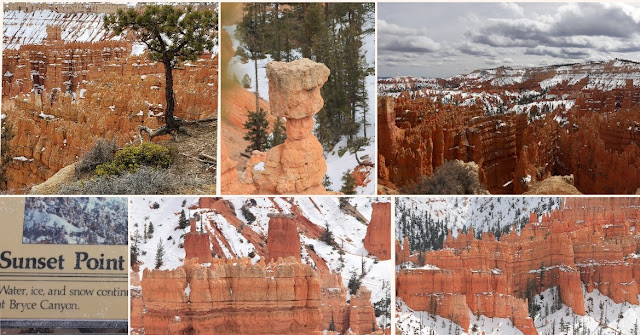Anasazi State Park and Museum, Boulder, Utah - 21 Mar 2020
 |
 |
| Snow remains on all heights of over 6,000 feet. |
 |
| At lower elevations a herd of elk grazing and relaxing. |
Bryce Canyon National Park, Utah - 22 March 2020
 |
| These photos do not do justice to the formations and waves of crimson-colored hoodoos or spire-shaped rock formations. |
 |
| Upper, middle photo is Thor's Hammer from Sunset Point. |
 |
| Looking back towards Sunrise Point. View of the snow covered Grand Staircase Esclante. |
More Bryce to come.














No comments:
Post a Comment